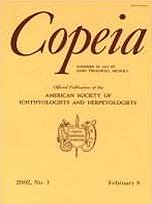We studied the reproductive and nesting ecology of the Yellow-Blotched Map Turtle (Graptemys flavimaculata) from 1993–1994 and from 1996–1997 on the Pascagoula River in southeastern Mississippi. This species has undergone a recent decline leading to its listing as Threatened under the U.S. Endangered Species Act. We found three distinctive features of the biology of this population: a relatively low reproductive frequency compared with most other map turtles (maximum of 1.16 clutches/female), a very high level of nest mortality caused by river flooding and fish crow predation (90% mortality in some years), and an unexpectedly high level of nesting in shaded areas along the riverbank, perhaps in response to human disturbance on and near sandbars. Our data suggest that, in the absence of extraordinarily high adult survival, this population will decline because of low recruitment. We suggest a series of specific strategies to reverse these declines, including better law enforcement to protect adult turtles, public education, and possibly, protection of nests on the nesting beaches.
How to translate text using browser tools
1 December 2003
Reproductive and Nesting Ecology of the Yellow-Blotched Map Turtle, Graptemys flavimaculata: Implications for Conservation and Management
Brian D. Horne,
Robert J. Brauman,
Megan J. C. Moore,
Richard A. Seigel
ACCESS THE FULL ARTICLE





